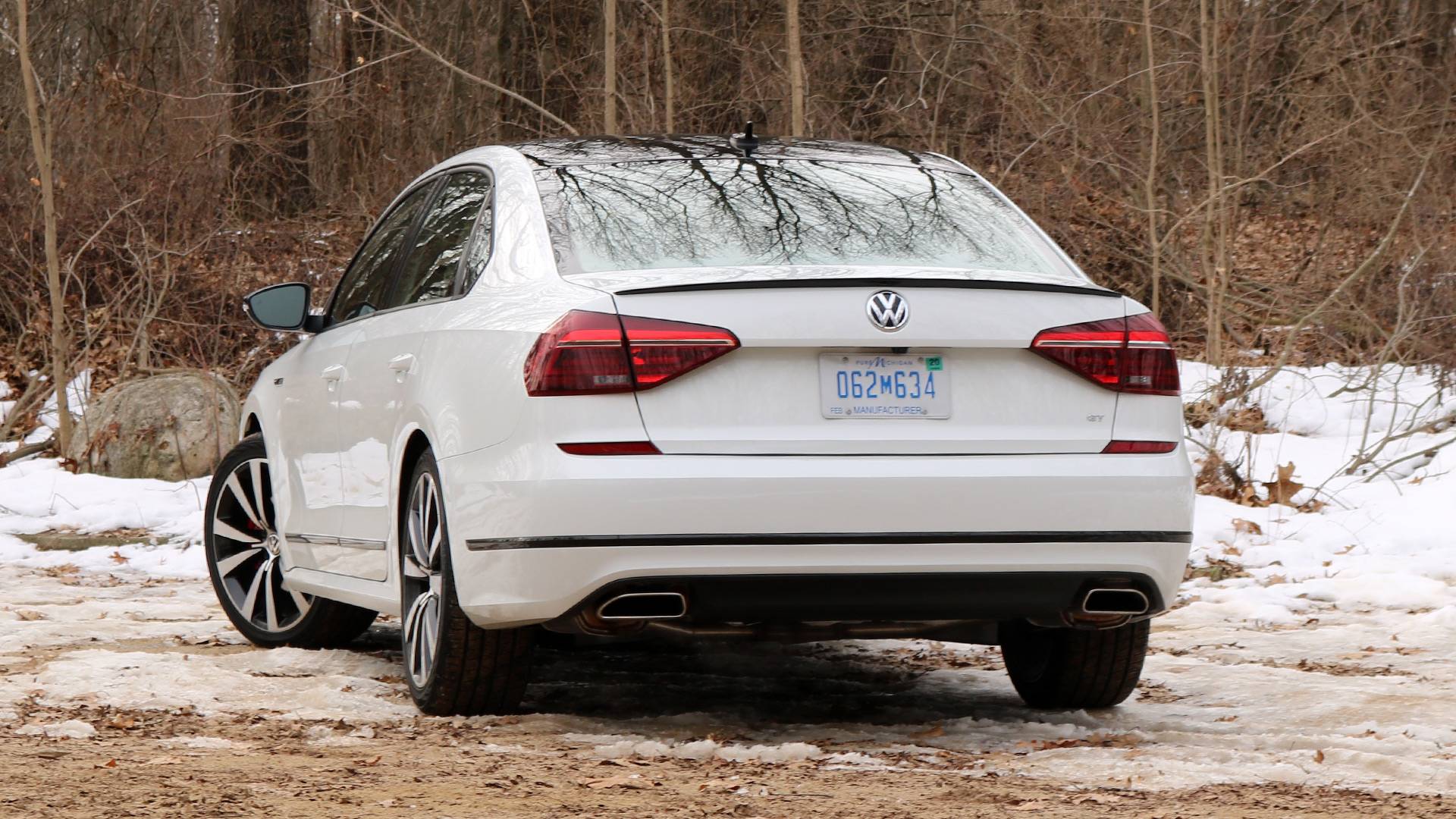In the world of automotive marketing, the label “five-seater” is thrown around so often that it’s almost meaningless. Nearly every compact sedan, crossover, or coupe claims to offer seating for five.
But anyone who has ever crammed three adults into the back seat of a so-called five-passenger vehicle knows that reality often falls far short of the promise.
Sure, there may be five seat belts, but comfort? Usability? Personal space? That’s an entirely different conversation—one that doesn’t get nearly enough attention during the car-shopping process.
The rear bench in a vehicle plays a crucial role in how it functions day to day, especially for families, carpoolers, ride-share drivers, or anyone who regularly ferries passengers.
And yet, it remains one of the most neglected aspects of car design. Many manufacturers treat the back seat as an afterthought—a checkbox to be ticked rather than a space to be carefully engineered.
As a result, we have cars that claim to offer seating for five when, in truth, they can barely manage four. The difference between a genuinely adult-friendly rear bench and a cramped, claustrophobic one is not just about luxury—it’s about respecting the needs of all occupants, not just the driver and front passenger.
A comfortable rear bench that accommodates three adults isn’t just about raw numbers like legroom or headroom. It’s about how that space is distributed and shaped. Are the seat cushions wide and flat enough? Is the middle seat more than just a raised hump with a seat belt?
Is there enough shoulder room to prevent passengers from rubbing elbows the entire ride? Is the floor flat, or does a bulky center tunnel force the middle passenger to awkwardly spread their legs? These are the kinds of questions that determine whether a car can truly carry five people, or just pretend to.
In this article, we dive deep into five vehicles that excel at offering real, usable space in the rear bench, giving all three passengers a fair shot at comfort. These are the sedans and SUVs that prove you don’t have to sacrifice rear-seat usability to get style or performance.
But to balance the scales, we also highlight five vehicles where the rear seat fails to meet even minimal standards for adult comfort—cars where two passengers in the back already feel cramped, and three is a pipe dream.
We’re not just going by spec sheets or manufacturer claims—we’re looking at real-world usability. Because your car might technically seat five, but if your passengers are miserable after ten minutes in the back, what good is that number?
Whether you’re shopping for a new car, evaluating your current ride, or just love diving into the nuances of vehicle design, this article will open your eyes to the often-overlooked world of rear bench engineering. Let’s find out which cars really seat five—and which ones barely seat two.
5 Rear Benches That Comfortably Seat 3 Adults
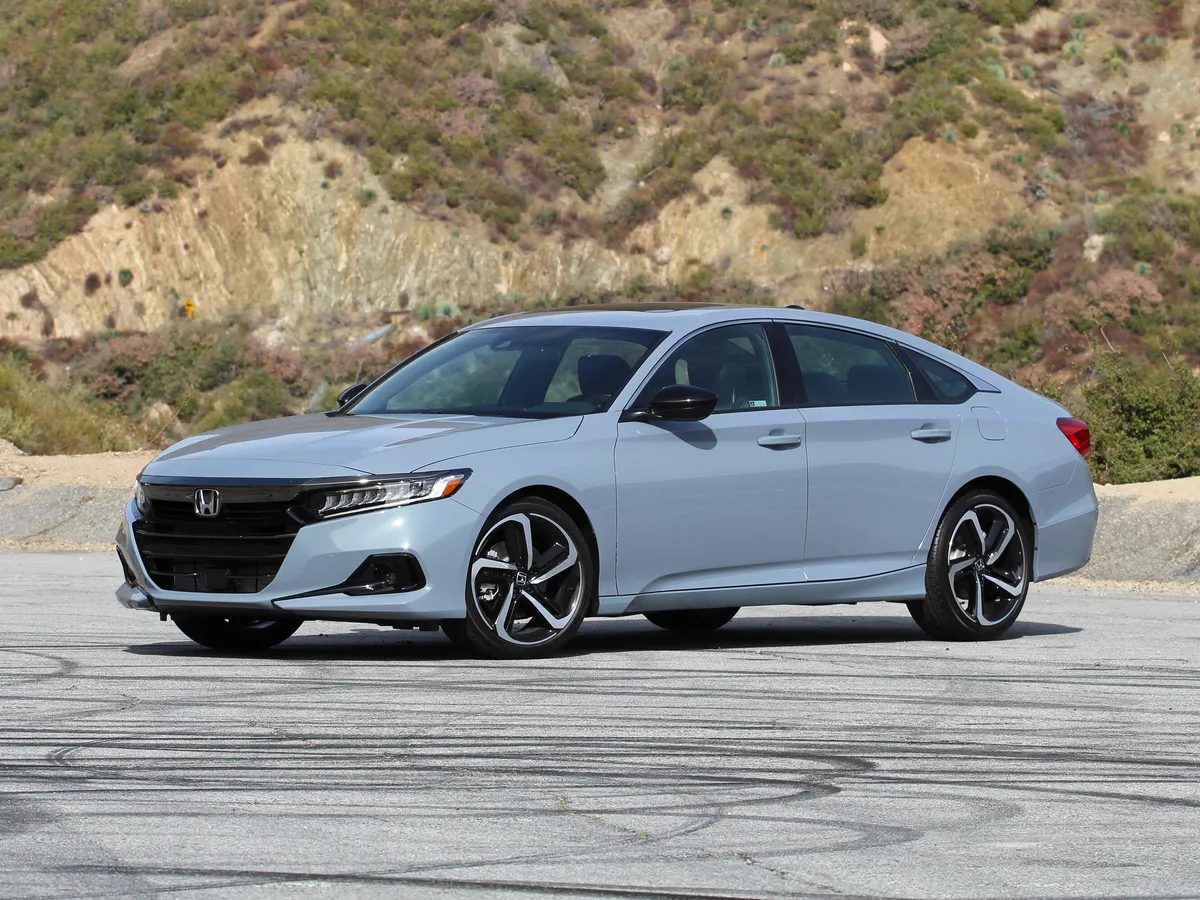
1. Honda Accord (10th & 11th Generation)
The Honda Accord continues to set the gold standard for practical comfort in the midsize sedan segment, and nowhere is that more evident than in its rear bench design. With a wheelbase that stretches to allow ample interior volume, the Accord’s cabin feels spacious in every direction.
The rear bench, in particular, is wide and accommodating enough to handle three full-grown adults without cramping shoulders or knees. There’s a sense of horizontal freedom that you rarely get in non-luxury sedans, and that’s due in large part to Honda’s clever interior packaging and low beltline that maximizes usable space.
Even the middle seat—often an afterthought in many sedans—is thoughtfully integrated in the Accord. The seat cushion is wide, supportive, and only slightly raised, which helps avoid the “perch effect” that plagues many center positions.
Legroom remains generous even for taller adults, and thanks to the nearly flat floor, the middle passenger doesn’t have to awkwardly straddle a bulky transmission tunnel. This thoughtful approach to cabin layout means that three adults can sit side-by-side on longer journeys without having to constantly shift around or negotiate armrest territory.
Add to that Honda’s attention to rear-seat amenities, and the Accord rises further above its competition. Rear passengers benefit from rear air vents, USB ports in higher trims, and a center fold-down armrest with cupholders when fewer than three are aboard.
The seatbacks are gently reclined, the cushions are deep enough to promote relaxed posture, and ingress/egress is smooth thanks to wide door openings. Whether you’re using it for road trips, carpools, or daily commuting with family or coworkers, the Accord provides a rear seat experience that’s not only tolerable but genuinely enjoyable.

2. Volkswagen Passat (2012–2022 U.S. Market Models)
The Volkswagen Passat may have flown under the radar in terms of style and flair, but when it comes to rear seat comfort, it was a class leader in disguise. Specifically engineered with North American buyers in mind, the U.S.-market Passat featured a stretched wheelbase that translated directly into a cavernous back seat.
With dimensions that rivaled some full-size sedans, the Passat offered a rear bench that truly felt like a lounge. Three adults could sit side-by-side without any awkward shoulder collisions or knee conflicts, making it one of the few sedans where the fifth passenger wasn’t a burden.
A key highlight was the completely flat floor, a rarity in sedans. This seemingly small detail made a huge difference in terms of comfort for the center passenger. Without a transmission hump to contend with, the middle occupant could stretch their legs forward without awkward twisting or compromise.
The seat cushions were broad and firm, with a backrest that didn’t overly curve into the center, meaning each of the three passengers had a clear, defined space. The center seat was not just tolerable—it was actually usable for long periods of time, a claim few sedans can make with confidence.
Even the overall ambiance of the Passat’s cabin helped make the rear seat experience better than most. The large windows let in plenty of natural light, and the high roofline ensured that even taller adults wouldn’t bump their heads against the ceiling.
Optional amenities like rear air vents and heated outboard seats in higher trims made it feel upscale without the luxury badge. In many ways, the Passat’s unassuming design masked one of the best back seat experiences in the segment—practical, comfortable, and surprisingly luxurious for the price point.
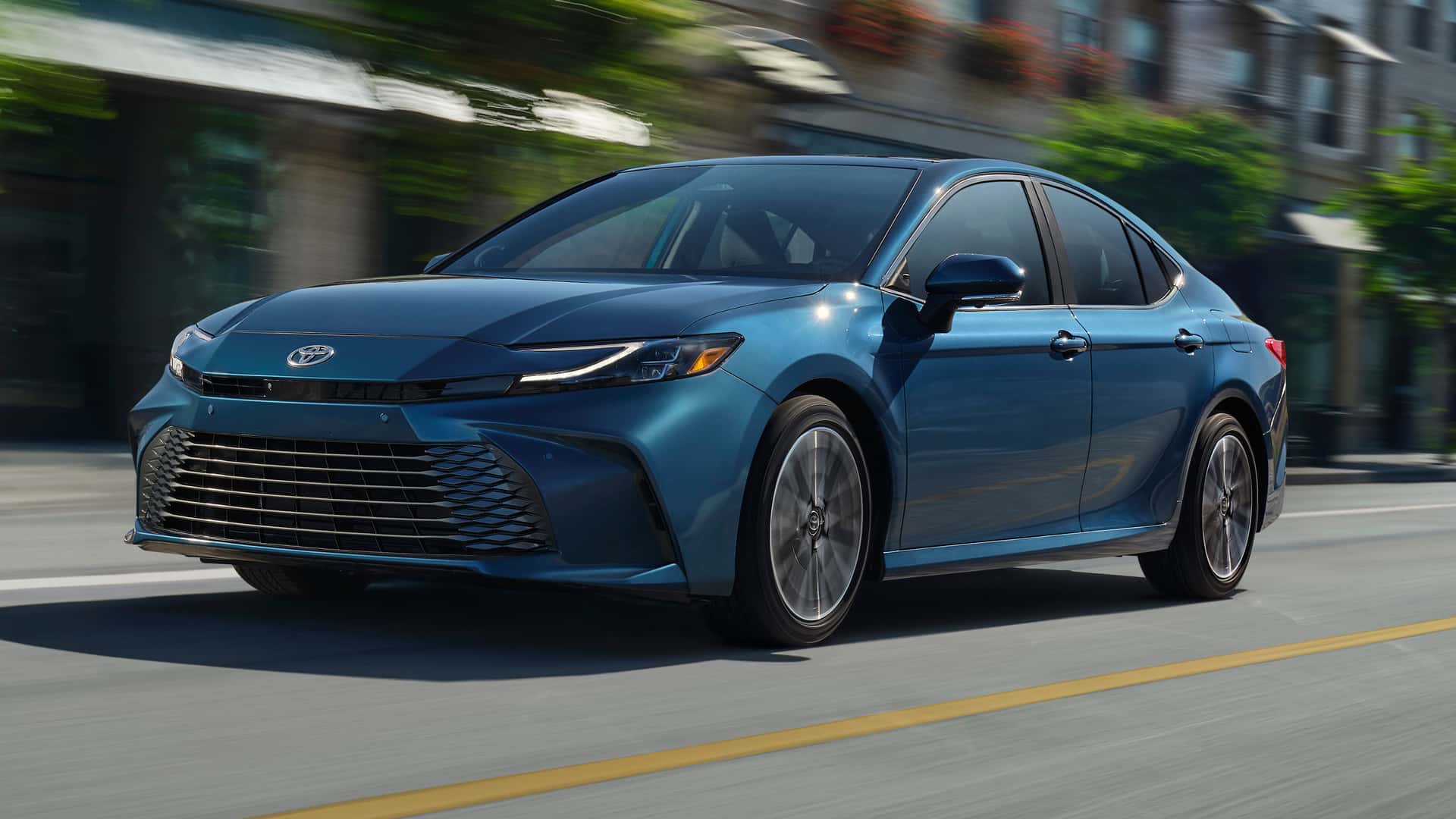
3. Toyota Camry (8th Generation, 2018–Present)
The 8th-generation Toyota Camry marked a turning point for the model in both design and interior functionality. While Toyota aimed to inject more excitement into the Camry’s appearance and driving dynamics, it didn’t lose sight of its practical core, especially when it comes to the rear seat.
The cabin is wide enough to comfortably seat three adults across, and the rear doors open generously, allowing easy access even for larger passengers. Toyota has done a commendable job balancing sculpted style with functional space, creating a rear bench that supports both form and function.
The bench itself is well-padded across all three seating positions. Unlike many cars that overly contour the outboard seats at the expense of the center position, the Camry’s bench maintains a fairly even, flat design. This provides ample hip room for the middle passenger, who also benefits from decent legroom and minimal tunnel intrusion.
While not completely flat, the floor hump is manageable, and the height of the seat cushions keeps knees at a natural angle. The upright yet relaxed seatback angle further supports comfort over longer distances, preventing the slouched or knees-in-the-air position often seen in tighter sedans.
Additional touches help elevate the Camry’s rear seat usability. Air vents are standard in most trims, and the rear window line is low enough to prevent feelings of claustrophobia. Even the armrest is placed at a usable height when deployed.
Toyota also includes headrests for all three positions and provides ISOFIX anchors and a wide bench for those with child seats. Altogether, the Camry delivers a rear seat experience that lives up to its “five-passenger” claim—not just in name, but in genuine comfort and practicality.

4. Tesla Model S
As an electric vehicle designed from the ground up, the Tesla Model S benefits from packaging freedoms that traditional gas-powered cars simply can’t match. One of the standout advantages is its entirely flat rear floor, thanks to the skateboard-style battery layout that eliminates the need for a transmission tunnel.
This design opens up the interior in a dramatic way, especially for the rear bench. Three adults can sit across the back without feeling boxed in, and the absence of a center hump allows for far more natural leg positioning, especially for the middle occupant.
Beyond just space, the Model S features a minimalist but highly functional rear seat design. The seat cushions are firm yet comfortable, and while the outboard seats are gently bolstered, the center seat remains flat and unobtrusive—ideal for real-world three-passenger scenarios.
Rear legroom is ample, and foot space under the front seats is unrestricted, providing better stretch-out room than many sedans of comparable size. Despite its swooping roofline, headroom remains respectable for passengers up to 6 feet tall, especially in versions with the glass roof, which increases the perception of space.
While Tesla often skimps on traditional luxury cues like plush leather or wood trim, the Model S compensates with features that enhance rear seat usability. Rear passengers enjoy access to touchscreen controls for climate and media in newer versions, along with air vents and USB-C ports for device charging.
The wide, nearly frameless windows provide good outward visibility, avoiding the cave-like sensation found in some rivals. Altogether, the Tesla Model S doesn’t just redefine performance and tech—it offers a highly competent and comfortable space for three adults in the back seat.
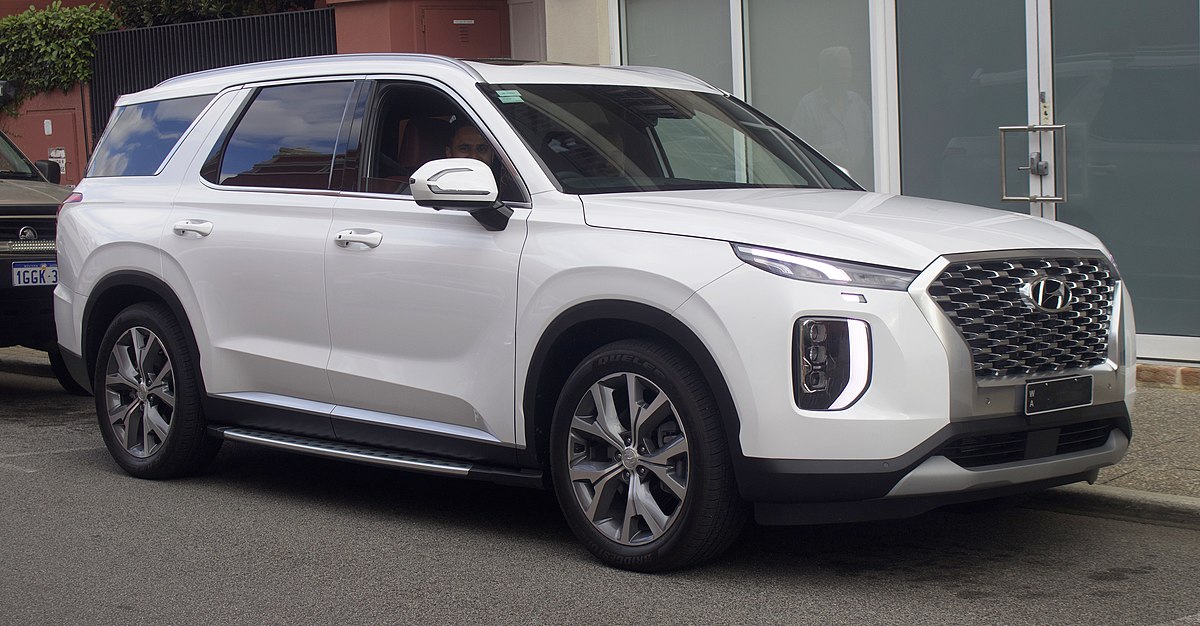
5. Kia Telluride / Hyundai Palisade (Bench Configurations)
Among midsize SUVs, the Kia Telluride and Hyundai Palisade have earned praise for their upscale interiors and family-friendly designs, and the second-row bench option is a standout feature for those needing to seat three adults across comfortably.
Unlike many SUVs that default to captain’s chairs, the bench version of these twins provides a flat, wide seating area with generous shoulder and hip room. Adults seated three across will find minimal crowding, thanks to thoughtful spacing, high seat cushions, and broad backrests. It’s rare for the second row of an SUV to rival a luxury sedan in comfort, but these two get remarkably close.
The center seat in the second-row bench is especially well-executed. Rather than a narrow, raised hump, it’s flush with the outboard seats and offers the same level of padding and support. The floor is nearly flat, with just a minor rise, and foot space is unimpeded by console extensions.
The adjustable recline function allows all passengers to find a comfortable angle, and the generous width of the vehicle ensures that no one is forced to rub shoulders or compress inward uncomfortably. Whether you’re transporting adults to a wedding or taking a cross-state road trip, the Telluride and Palisade bench setups are fully adult-ready.
What seals the deal are the comfort-enhancing amenities. Rear seat passengers get dedicated air vents, USB ports mounted in seatbacks, cup holders, and even optional heated rear seats.
The ride quality in both SUVs is smooth and composed, and wind noise is minimal, contributing to a serene experience in the rear. With thoughtful design and premium-level space, these Korean midsize SUVs prove that a second-row bench can be every bit as comfortable and functional for adults as the front seats.
5 Rear Benches That Don’t Even Fit 2 Adults
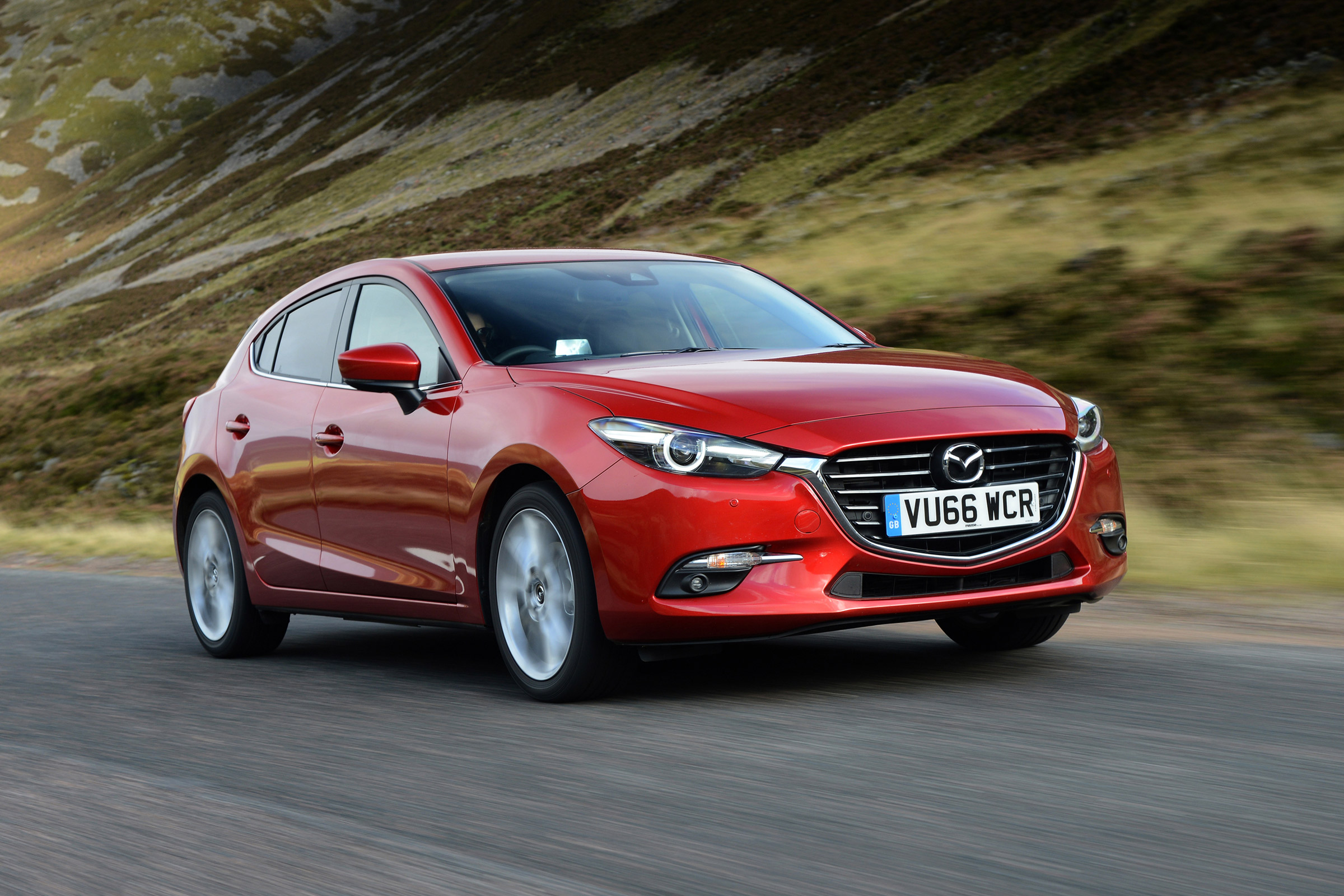
1. Mazda3 Sedan (4th Gen, 2019–Present)
The Mazda3 is a well-loved compact car known for its sporty design, engaging driving dynamics, and upscale materials, but when it comes to rear-seat practicality, particularly for adult passengers, it falls significantly short. While it’s technically rated to seat five, the rear bench struggles to accommodate even two adults comfortably.
The cabin tapers inward toward the rear, narrowing shoulder and hip room to the point that two average-sized adults will find themselves pressed uncomfortably close. Add a third person in the middle seat, and it becomes downright claustrophobic.
One of the most noticeable pain points is the sloping roofline, which, while adding to the Mazda3’s sleek exterior appeal, severely compromises rear headroom. Taller passengers will have to hunch forward or tilt their heads sideways just to avoid brushing against the headliner.
This creates a sense of spatial confinement that’s exacerbated by the small rear windows and dark interior tones in most trims. The result is a rear seat area that feels far more cramped than its compact rivals, even those with similar dimensions on paper.
Legroom is also limited, especially when front occupants are taller and push their seats back even slightly. While Mazda has put effort into premium materials and refined styling, it comes at the cost of passenger usability in the rear. The bench seat is short on thigh support, and the floor hump is prominent enough to severely impact any possibility of three-across seating.
Even with just two adults, rear passengers often report feeling squeezed, unsupported, and eager for the ride to be over. The Mazda3 may be a pleasure for the driver, but it’s a compromise—if not a punishment—for those relegated to the back.

2. Mini Cooper Hardtop (2-Door)
The Mini Cooper Hardtop 2-door is designed with urban agility and unique personality in mind, but it should come with a warning label for adults planning to sit in the back. Despite technically offering four seats, the rear bench is one of the most cramped in the entire automotive market.
Accessing it is a challenge in itself, requiring front-seat occupants to slide forward and passengers to contort themselves to enter through a narrow gap. Once inside, the experience gets no better—the available space is laughably tight, both in legroom and headroom.
The most glaring limitation is legroom. With the front seats adjusted for even an average adult, the rear seats become virtually unusable. Knees press into seatbacks, and feet have nowhere to go, especially due to the high placement of the seat base and the limited floor depth.
Adults longer than five-foot-six often end up folding their legs sideways or sitting cross-legged just to fit. And once you’re in, there’s no sense of airiness—thick pillars, small windows, and a low roofline combine to make the rear feel like a padded cell rather than a passenger compartment.
From a comfort standpoint, the Mini Cooper’s rear bench is best suited for emergency use or short trips with children. The seatbacks are upright and flat, the cushioning is minimal, and there are no amenities—no air vents, no USB ports, not even meaningful armrests.
In essence, the rear bench exists to fulfill a legal requirement rather than to serve real passengers. While the Mini Cooper thrives as a city runabout and a style icon, its rear seats are best left folded down for cargo or avoided entirely by anyone over the age of twelve.
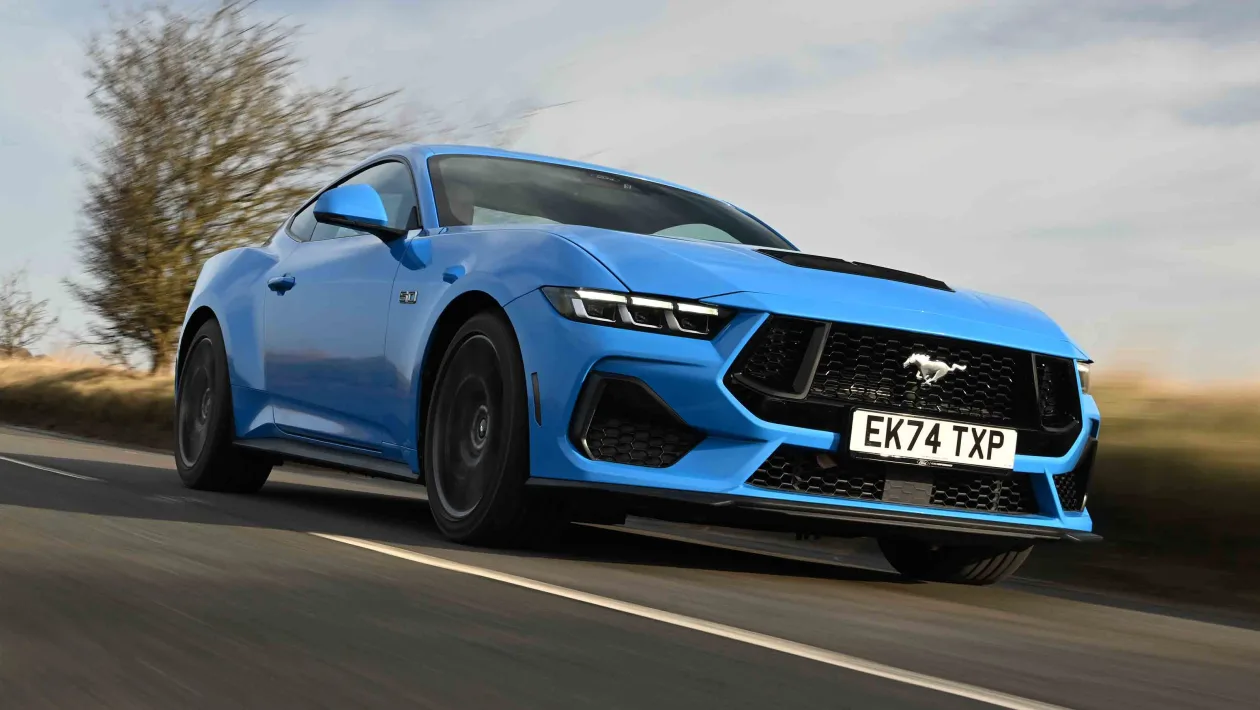
3. Ford Mustang (6th Gen Coupe, 2015–Present)
The Ford Mustang’s back seats have long been more of an aesthetic suggestion than a practical space, and the sixth generation continues that tradition. While the coupe body style gives it a sleek and muscular profile, it comes at a significant cost to rear passenger accommodation.
Getting into the rear seat requires a gymnast’s flexibility, and once back there, passengers are greeted by tight quarters and a design that clearly prioritizes the driver’s experience over passenger usability.
The rear bench in the Mustang is deeply compromised by the car’s fastback roofline. Headroom is extremely limited, to the point where even shorter adults will find their heads brushing up against the sloped rear window.
Legroom is equally lacking, as the front seats extend far back into the rear footwell, and there’s little room to slide your feet underneath. The bench itself is narrow and shallow, with a steeply raked backrest that forces passengers into a rigid, upright posture. For taller occupants, it’s essentially unusable.
Even with just two passengers, the Mustang’s rear seat fails to offer a comfortable or even practical experience. The middle seat is effectively nonexistent, with a massive hump and zero cushioning, and while the rear does offer seatbelts and headrests, they’re more symbolic than useful.
There are no vents, controls, or amenities to speak of, and the sense is that rear passengers are an afterthought. The Mustang may be a thrill to drive, but unless you’re using the back seat for small children or the occasional gym bag, it’s more burden than a benefit.
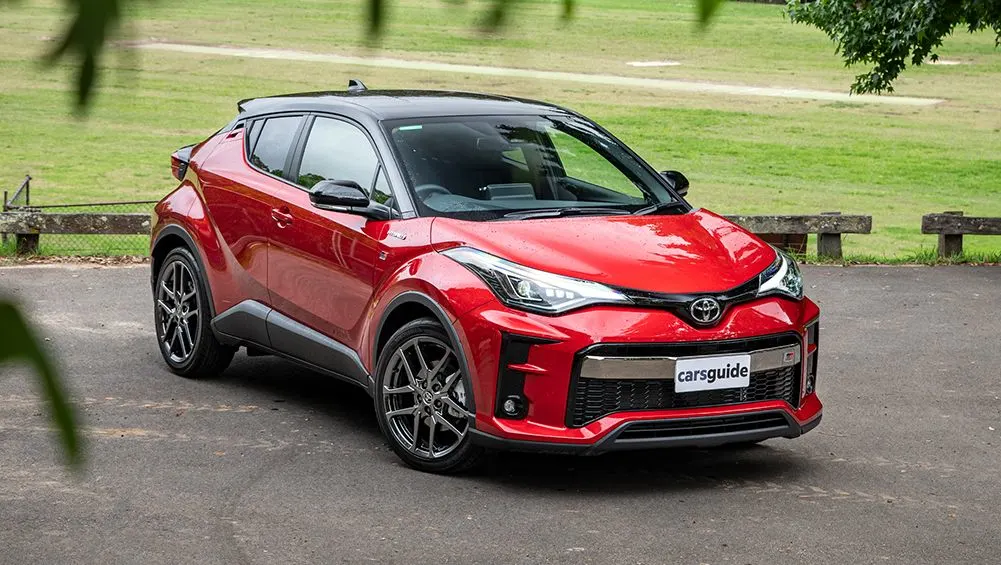
4. Toyota C-HR
Toyota’s C-HR is marketed as a sporty urban crossover, aimed at younger buyers who prioritize style and maneuverability over traditional practicality. While it does feature a five-seat layout on paper, the rear bench is one of its most disappointing aspects, especially for adult passengers.
The narrow body and coupe-like roofline result in a cramped, dark, and uncomfortable rear space that’s barely suitable for two adults, let alone three. If you’re expecting SUV-like spaciousness from this compact crossover, you’ll be sorely let down.
The C-HR’s rear headroom is compromised by its swooping roof design, while the small, high-set rear windows make the space feel even more confined. Passengers report a pronounced sense of claustrophobia, especially with the thick rear pillars that block side visibility.
The door handles are oddly placed high up near the window, and the doors themselves don’t open wide enough for easy entry and exit. Legroom is tight when the front seats are occupied by taller drivers, and the floor hump further eats into the limited space for the middle occupant.
What truly makes the C-HR’s rear bench a failure for adults is the seating geometry. The bench is flat, with limited lumbar or thigh support, and the seatback angle forces passengers into an awkwardly upright position.
There are few comfort features—no rear vents, charging ports, or armrests—and the center seat is essentially unusable due to the narrow bench and raised floor.
Even for short commutes, two adults in the back will find themselves uncomfortable and fatigued. Despite its bold exterior styling, the C-HR’s rear seating is a case of form completely defeating function.

5. Chevrolet Camaro (6th Gen Coupe, 2016–Present)
The Chevrolet Camaro is a car built for aggressive driving and bold visual appeal, not rear seat comfort. From the outside, it exudes muscle and speed; from the inside, especially in the rear, it screams confinement.
The sixth-generation Camaro features a sharply sloped roofline, thick C-pillars, and a cramped cabin that makes the back seat nearly unusable for adults. While the car does technically have rear seatbelts, calling it a four-seater is a stretch of the imagination for anyone over five feet tall.
Climbing into the Camaro’s rear seat is a logistical exercise. With only two doors and limited front seat travel, rear passengers must fold and squeeze their way in. Once seated, the experience is no better. Legroom is almost non-existent unless the front passengers are extremely short or willing to slide forward awkwardly.
Headroom is a major issue as well—the roofline curves sharply downward toward the rear, forcing taller passengers to duck or lean uncomfortably forward. The result is a hunchbacked seating position that feels more like punishment than a ride.
Comfort and usability are virtually absent in the Camaro’s rear bench. The seatbacks are steep, the cushioning is thin, and there’s no practical center seat—the middle hump is enormous and eats up any usable width.
Rear passengers have no vents, no USB ports, and very limited visibility, making long rides feel even longer. Chevrolet clearly designed the Camaro with the driver in mind, and while it excels in delivering a thrilling ride from the front seat, it leaves rear passengers behind, both figuratively and literally.
If there’s one lesson to take away from comparing these ten vehicles, it’s this: not all rear benches are created equal, and the term “five-seater” is one of the most abused labels in automotive marketing. For manufacturers, it’s easy to install three seat belts and call it a day.
But for the people actually sitting in the back—especially adults—it’s not about how many belts there are, but how usable and comfortable that third seat actually is. Too often, the rear seat ends up being a compromise zone, where form beats function, and where adult passengers are crammed into spaces designed for short rides with small kids.
The difference between a good and a bad rear bench often comes down to a few key factors: width, floor design, seatback shape, and access. In the best examples—like the Honda Accord, Tesla Model S, or Kia Telluride—the automakers clearly made passenger comfort a priority.
These vehicles feature wide cabins, flatter floor sections, usable center seats with proper padding, and rear amenities that turn the back seat from a penalty box into a viable long-haul space. They’re not just “five-seaters” in name—they’re five-seaters in practice, and that counts for a lot in the real world.
On the flip side, cars like the Mazda3, Camaro, or Mini Cooper Hardtop make the back seat feel like an afterthought. They may have the required number of belts and headrests, but the space is so cramped, the seating so compromised, that even two average-sized adults feel like they’re invading each other’s personal space. Add a third person into that mix, and it’s no longer about comfort—it’s about endurance. These designs may look good on paper or perform well on the track, but they make daily usability for passengers a serious chore.
This matters more than ever today. With families looking to maximize utility, ride-share drivers spending hours with multiple passengers, and more people carpooling to work or events, rear seat comfort is no longer optional. It’s a core part of a vehicle’s functionality, just like fuel economy or infotainment.
And while it may not get as much attention in commercials or reviews, it should factor into your buying decision. After all, your passengers are just as important as your driving experience, especially if they’re stuck in the back on a long commute or a weekend road trip.
In the end, the best cars are the ones that consider everyone, not just the person behind the wheel. A comfortable, spacious, thoughtfully designed rear bench isn’t a luxury feature. It’s a mark of good engineering and respect for the people who share the ride.
So next time you shop for a car, don’t just check the spec sheet—climb into the back seat. Sit in the center. Look for comfort, space, and practicality. Because of those five seat belts? They only matter if five people can actually use them and enjoy the ride.

